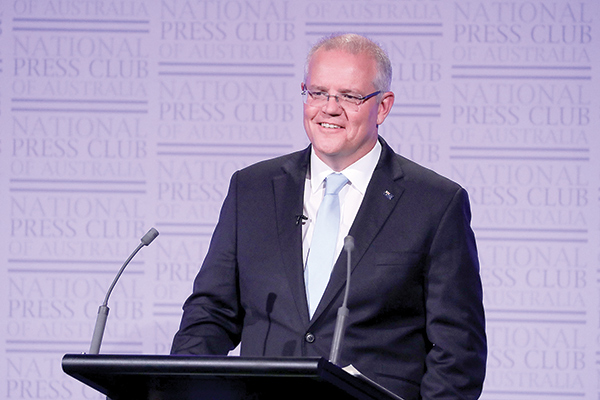Aussie PM all set for majority govt
Published on: Tuesday, May 21, 2019

SYDNEY: Prime Minister Scott Morrison (pic) looked set on Monday to form a majority government as vote counting from Australia’s weekend election allayed fears that his conservative coalition may have to rule in the minority following its shock victory.
The coalition was returned to power in a stunning result on Saturday night, after opinion polls and odds-makers had tipped the opposition Labor Party to win. The outcome ranks as Australia’s biggest election upset since 1993, when Labor Prime Minister Paul Keating was returned to power.
ADVERTISEMENT
With 76 seats in the House of Representatives needed for majority rule, figures from the Australian Electoral Commission on Monday showed 84% of the votes had been counted, with the coalition on target to win 77 seats an increase of four after going into the election as a minority government.
The Labor Party was set to claim 68 seats, with independents and minor parties taking six.
Winning at least 77 seats would also allow Morrison’s coalition to appoint the house speaker from its own ranks, rather from among independent or minor party lawmakers.
As Morrison began finalizing his new Cabinet on Monday, the stock market welcomed the election result. Australia’s benchmark S&P ASX 200 index climbed 1.7 percent on the day reaching its highest level since 2007, just before the global financial crisis.
ADVERTISEMENT
After being elected in 2016 with 76 seats, the power base of Morrison’s coalition was diminished through a series of by-elections late in its three-year term. One such defeat was triggered by the ousting last August of then-Prime Minister Malcolm Turnbull in an internal party vote.
That move, which ended in Morrison becoming prime minister, caused widespread disgust among an Australian electorate sorely disillusioned by seeing another one of its leaders replaced without them having a say.
ADVERTISEMENT
Morrison had become Australia’s sixth prime minister in only eight years. Four such changes had been brought about by lawmakers voting to dump their party’s leader, two each from the coalition and the center-left Labor Party. Morrison’s predecessor, Turnbull, had himself become prime minister in 2015 through an internal party coup that dumped Tony Abbott as leader of the Liberal Party.
Analysts had predicted that the coalition would pay dearly for that latest leadership switch, with Morrison expected to exit after one of the shortest terms as prime minister in Australian history.
Most late surveys showed Labor leader Bill Shorten as having a small but clear lead over Morrison as preferred prime minister, 51% to 49%.
Bookmakers had Labor at odds as short as $1.16 to $1 to win government, with the coalition as long as $5.50.
As analysts tried to make sense of the outcome, several factors were highlighted.
One of them was the strong and effusive campaigning of Morrison himself, praised by his treasurer, Josh Frydenberg, for having “crisscrossed the country with great energy, belief and conviction” while selling “our economic plan to the Australian people, a plan that resonated with them.”
By contrast, Labor was said to have suffered by campaigning on a long and complex list of initiatives, including an ambitious plan for reducing greenhouse emissions and proposed changes to taxes on income from the stock market, which the coalition attacked as a “retirees’ tax.”
Stay up-to-date by following Daily Express’s Telegram channel.
Daily Express Malaysia




